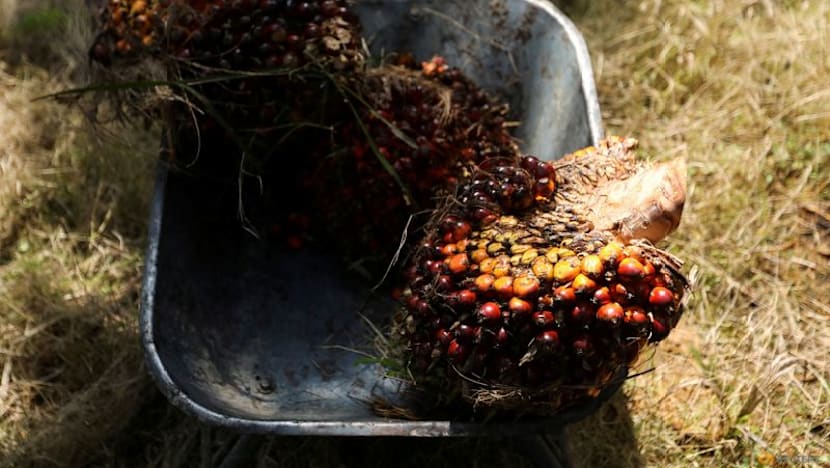Business
Malaysia’s Palm Oil Stocks Expected to Fall Amid Rising Exports

Malaysia’s palm oil stocks are projected to decline in the coming months, with estimates suggesting an end-of-year inventory of approximately 1.7 million metric tons. This anticipated decrease is attributed to a seasonal slowdown in production coinciding with increasing exports driven by festive season demand, according to the Malaysian Palm Oil Board (MPOB).
The country’s position as the world’s second-largest palm oil producer, following Indonesia, may bolster benchmark futures, which have faced downward pressure recently due to competitive pricing from soyoil. “Production is slowly coming down, and we expect exports to rise in the coming months on festive season demand,” said Ahmad Parveez Ghulam Kadir, director-general at the MPOB, on Monday.
Production Trends and Market Pressures
Historically, Malaysian palm oil production experiences a downturn towards the end of the year after a strong performance in the third quarter. According to MPOB data, palm oil stocks rose by 4.18 percent month-on-month in August, reaching 2.2 million tons, the highest level since December 2023. In recent weeks, palm oil prices have come under pressure as a significant decrease in soyoil prices has made the latter more competitive, prompting major palm oil buyer India to increase its soy oil imports for the upcoming months.
Despite current pressures, Kadir indicated that palm oil prices are likely to remain stable in the near future due to uncertainties surrounding supplies from Indonesia. He noted that potential disruptions in Indonesian exports could result from the proposed implementation of the B50 biodiesel programme and ongoing government seizures of oil palm plantations.
Indonesia currently enforces a 40 percent palm oil content requirement in biodiesel, with plans to elevate this to 50 percent starting next year. Earlier this month, Indonesia transferred 674,178 hectares (approximately 1.7 million acres) of palm oil plantations to state-owned firm Agrinas Palma Nusantara, elevating the total area under the company’s management to 1.5 million hectares (around 3.7 million acres).
Future Outlook and Industry Developments
In Malaysia, the replanting of oil palm is progressing at a slow pace. To expedite this crucial process, the MPOB has called on the government to increase its allocation for palm oil replanting to 280 million ringgit for the year 2026, a significant increase from the 100 million ringgit allocated for this year.
As the market navigates these developments, stakeholders will be closely monitoring both production trends and export levels to gauge the future of palm oil prices and the overall health of the industry. The interplay between Malaysian and Indonesian supplies will continue to shape the global palm oil landscape in the months ahead.
-

 Business5 months ago
Business5 months agoKenvue Dismisses CEO Thibaut Mongon as Strategic Review Advances
-

 Lifestyle4 months ago
Lifestyle4 months agoHumanism Camp Engages 250 Youths in Summer Fest 2025
-

 Sports4 months ago
Sports4 months agoDe Minaur Triumphs at Washington Open After Thrilling Comeback
-

 Sports5 months ago
Sports5 months agoTupou and Daugunu Join First Nations Squad for Lions Clash
-

 Top Stories5 months ago
Top Stories5 months agoColombian Senator Miguel Uribe Shows Signs of Recovery After Attack
-

 World5 months ago
World5 months agoASEAN Gears Up for Historic Joint Meeting of Foreign and Economic Ministers
-

 Health4 months ago
Health4 months agoNew Study Challenges Assumptions About Aging and Inflammation
-

 Business5 months ago
Business5 months agoOil Prices Surge Following New EU Sanctions on Russia
-

 Entertainment4 months ago
Entertainment4 months agoDetaşe-Sabah Violin Ensemble Captivates at Gabala Music Festival
-

 Entertainment4 months ago
Entertainment4 months agoBaku Metro Extends Hours for Justin Timberlake Concert
-

 Top Stories5 months ago
Top Stories5 months agoRethinking Singapore’s F&B Regulations Amid Business Closures
-

 Business5 months ago
Business5 months agoU.S. House Approves Stablecoin Bill, Sends to Trump for Signature









